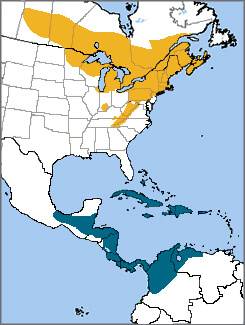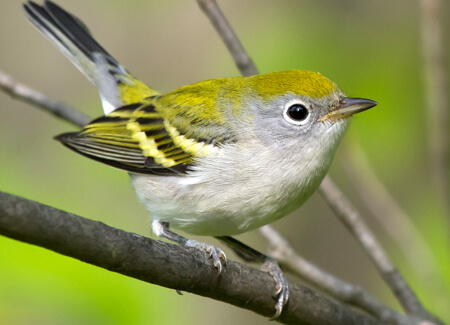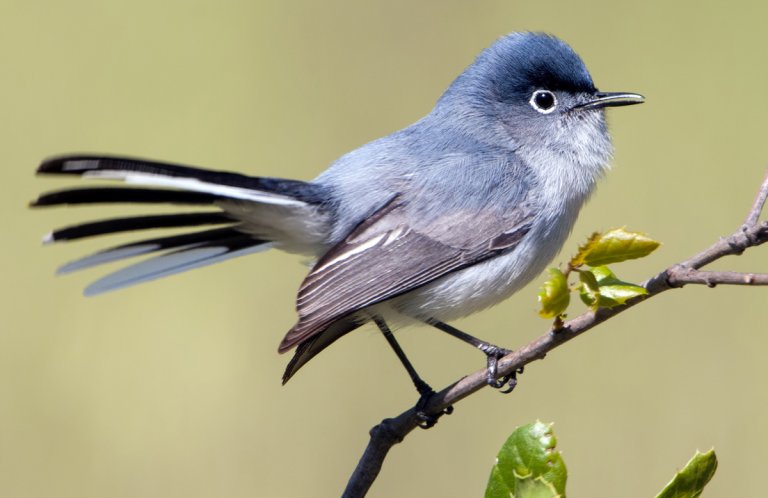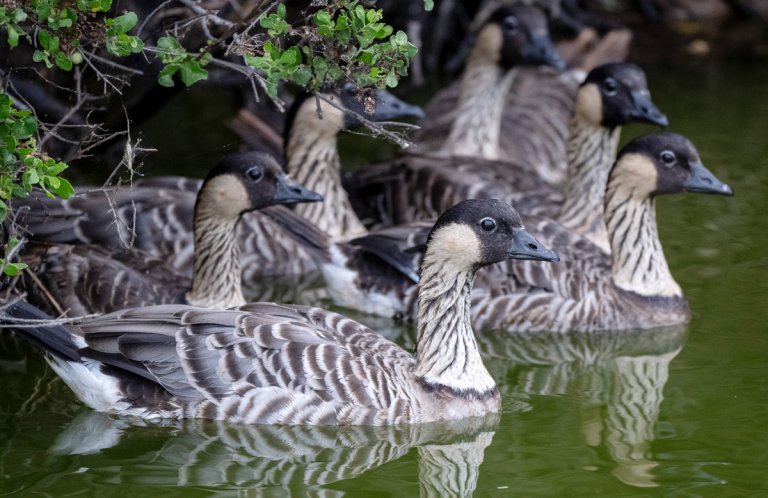 Chestnut-sided Warbler was not well known before the 1800s; prominent ornithologists such as Audubon and Wilson seldom saw the bird and knew little about it. Like the Golden-winged Warbler, this bird nests in semi-open, brushy areas, so could only be found where forest fires and other natural phenomena had created this habitat.
Chestnut-sided Warbler was not well known before the 1800s; prominent ornithologists such as Audubon and Wilson seldom saw the bird and knew little about it. Like the Golden-winged Warbler, this bird nests in semi-open, brushy areas, so could only be found where forest fires and other natural phenomena had created this habitat.
Habitat loss and collisions with glass, communications towers, and turbines during the warbler's nocturnal migration are among the chief threats to this species. Several ABC initiatives, including our Migratory Bird Program, focus on reducing these risks.
The Best Singer Wins
The male Chestnut-sided Warbler sings two song types; one is accented at the end, the other is not. The first is used before the arrival of the females and in the early nesting cycle. The second is used mostly in territory defense while the birds are raising young.
Males that only sing one song type appear to be less successful at attracting mates than males that sing both songs. The early-season song has a musical quality with an emphatic ending, sometimes interpreted as “very very pleased to meet cha!”
Active Insect-eater
Like other North American warbler species, including Prairie Warbler and American Redstart, Chestnut-sided Warblers are primarily insectivorous. They forage actively in shrubs and small trees with tail cocked up, gleaning insects from the undersides of leaves. Sometimes they will fly out to snatch insects in mid-air.
In winter, Chestnut-sided Warblers join mixed-species flocks with other migrants and resident birds. They may eat some berries during the winter, but insects still make up the bulk of their diet.
Sign up for ABC's eNews to learn how you can help protect birds
Young Forest Specialist
Chestnut-sided Warbler is one of the few native American birds that benefited from the clearing of mature forests, since the birds nest in brushy, open habitats. The species has actually expanded its range since the 19th century, as forests were cut and abandoned pasturelands began to re-grow. Today it is one of the most common breeding warblers in second-growth deciduous woodlands.
A small, cup-shaped nest woven of bark strips, weed stems, grasses, and plant down is built in a low tree or shrub, usually no more than six to seven feet from the ground. This species is frequently parasitized by Brown-headed Cowbirds; the warblers raise the much larger cowbird chick as one of their own, to the detriment of their own young.

Chestnut-sided Warbler in fall plumage, by Frode Jacobsen
While the female builds the nest and incubates the eggs, both parents feed the nestlings. The young birds leave the nest about 10 to 12 days after hatching, although they stay in the area and continue to beg for food until they are about one month old.
Maintaining the Right Habitat
Although still common, Chestnut-sided Warbler populations have slowly declined since the middle of the 20th century, primarily due to habitat loss on the breeding grounds. Cut-over woodlands have regrown in even-aged stands with less diversity and fewer shrubby areas for nesting.
Fortunately, the Chestnut-sided Warbler responds positively to forest management activities that create and preserve semi-open habitat. ABC is working with the Sustainable Forestry Initiative on bird-friendly practices that support species from the Chestnut-sided and Canada Warbler to the American Woodcock. Learn more about one of our projects with SFI in the Klamath Mountains of Oregon.)
ABC is also working to reduce the threat of collisions with glass, wind turbines, and communications towers. We are currently campaigning to stop construction of a precedent-setting turbine in an important migratory corridor on Lake Erie used by hundreds of bird species including the endangered Kirtland's Warbler.
In addition, we have successfully advocated for changes to tower lighting, reducing the chances of fatal bird collisions with these structures, and continue to promote bird-friendly building practices that reduce bird collisions with glass windows.
Donate to support ABC's conservation mission!



















































